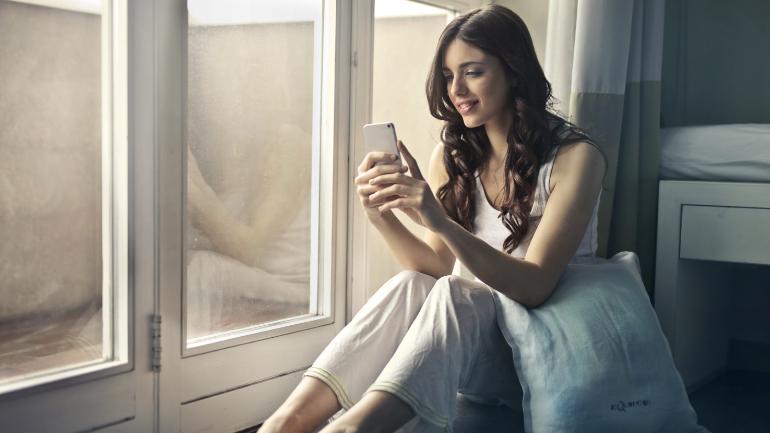
The relationship between health and technology has never been symbiotic. That is not news. We’re all aware that digital addiction is real. From eye strain because of excessive hours spent on the laptop and cell phone, depression due to cyberbullying, and worst of all, cases of self-harm due to viral challenges and games such as the Blue Whale and the Tide Pod Challenge, digital dependence has taken over our lives. In fact, while companies are trying to curb the effects of this addiction through apps like Offtime, Moment, among others, truth is that the spike in numbers is only increasing on a year-to-year basis.
An October 2018 report published in Apple Insider states nearly half of smartphone users spend more than five hours a day on their phone, with one in four reporting more than seven hours per day. These are alarming statistics. In addition to adverse effects on one’s emotional and mental well-being, there are negative consequences to one’s physical health as well. Screen radiation has always been one of the contributing factors for this. In fact, researchers have now concluded that the effects of radiation damage a lot more than just the eyes. Blue light, which is transmitted from screens, harms the skin causing damage such as hyperpigmentation, redness, ageing, wrinkles, and a lot more.
DANGEROUS RAYS
Most people confuse blue light for UVA and UVB rays. But, it’s not the same. What exactly is blue light? Dr Pankaj Chaturvedi, MD director, consultant dermatologist & specialist hair transplant surgeon, MedLinks explains, The blue/violet band of this visible spectrum has a particularly high energy level and is known as High Energy Visible Light (HEVL). Digital devices such as one’s computer and laptop are not the only source of HEVL. Chaturvedi adds, The sun is the main source of the blue light, the blue light emitted from the sun is not bad at all. He explains that blue light emitted from the sun helps control the body’s circadian rhythm (sleep-wake cycle), improves concentration and elevates the mood. The doctor continues, However, the exposure to blue light from screen-based devices disrupts the sleep cycle and results in unwanted fatigue and irritability.
Celebrity dermatologist Dr Kiran Kaur Sethi, talks about other risks of blue light mentioning, Blue light from the screen can disrupt circadian rhythms, leading to a higher risk of having diabetes.
SKIN DAMAGE
The long-term exposure of blue light on skin is known to produce stressors that eventually cause immense damage to it.
Sethi reiterates, Blue light can cause early skin ageing and pigmentation. It can also cause inflammation and skin sensitivity. This damage is mostly permanent
but can be treated.
There’s also mounting evidence that blue light exposure can result in photo-ageing by causing wrinkles, worsening skin laxity, and hyperpigmentation.
But how does this take place exactly? Chaturvedi breaks it down for us, HEVL generates free radicals, which is also called Reactive Oxygen Species (ROS). These radicals can cause skin cells to produce enzymes that break down the collagen and elastin that give skin its plump, youthful appearance. This process is often called oxidative stress, and it’s what causes skin to photo-age.
That said, while ageing is a natural process, what blue light does is speed up this process, thus making one look older than their years.
SHIELD YOURSELF
While the harmful effects of blue light are many, how does one defend their skin from it? Sethi says, There are certain products that can help prevent the oxidative damage of blue light. Vitamin C is a fabulous antioxidant, that helps counteract the oxidative damage of blue light.
Furthermore, lutein, a well-known
antioxidant used in ophthalmology to prevent mascular degeneration as well as blue light damage. Other antioxidants include glutathione and Vitamin E.
For those of you looking for products that shield you from these rays, Chaturvedi suggests, Mineral sunscreens and makeup containing iron oxide can help neutralise and repair the damage potentially due to this light. But it’s important to use these even indoors. Along with these products, an economical way is to use
anti blue-light screen guards to stop the emission from screens.
SKIN ESSENTIALS
The beauty domain is always looking to create products based on the latest scientific studies. It is no wonder then, that some of the leading brands have come up with products to counter-act the impact of blue light. Murad’s City Skin Age Defense Broad Spectrum with SPF 50, BareMinerals Complexion Rescue Defense with SPF 30, among other products are well-known as blue-light defence daily creams.
Organic Harvest, a homegrown brand has also come up with a cream to protect the skin from the harmful effects of blue light. Rahul Agarwal, CEO, Organic Harvest, says, This light-weight range of organic sunscreens (SPF 30 and 60) uses blue light technology. It acts as a smart shield against the damaging effects and prevents it from penetrating the skin. Ingredients such as aloe vera and clay present in the sunscreen protects the skin by creating a protecting layer.
There isn’t conclusive evidence to prove that blue light is harmful to the skin. However, it is always better to safeguard oneself. As the age-old adage goes, better safe than sorry.
[“source=indiatoday”]
